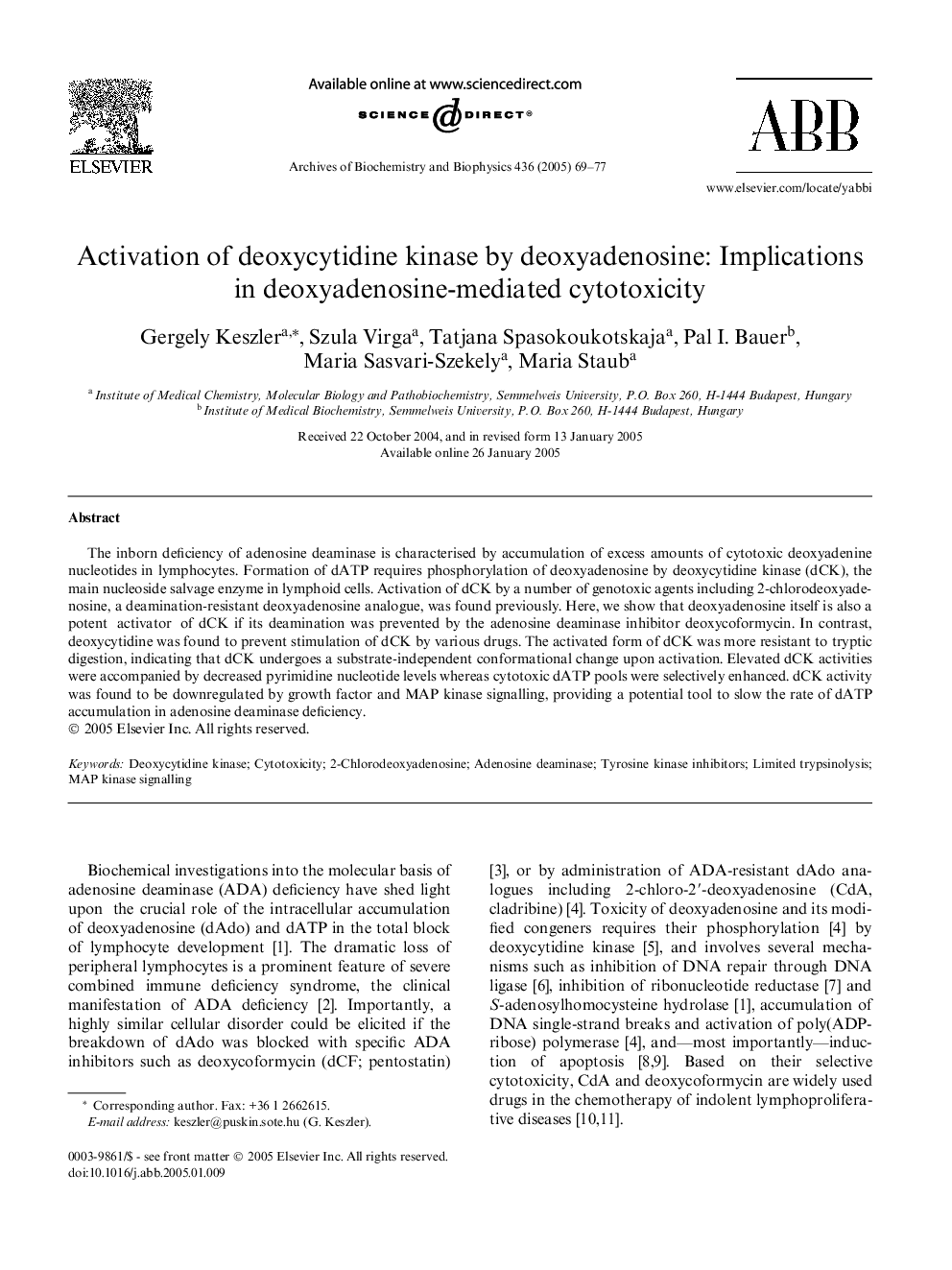| Article ID | Journal | Published Year | Pages | File Type |
|---|---|---|---|---|
| 9882267 | Archives of Biochemistry and Biophysics | 2005 | 9 Pages |
Abstract
The inborn deficiency of adenosine deaminase is characterised by accumulation of excess amounts of cytotoxic deoxyadenine nucleotides in lymphocytes. Formation of dATP requires phosphorylation of deoxyadenosine by deoxycytidine kinase (dCK), the main nucleoside salvage enzyme in lymphoid cells. Activation of dCK by a number of genotoxic agents including 2-chlorodeoxyadenosine, a deamination-resistant deoxyadenosine analogue, was found previously. Here, we show that deoxyadenosine itself is also a potent activator of dCK if its deamination was prevented by the adenosine deaminase inhibitor deoxycoformycin. In contrast, deoxycytidine was found to prevent stimulation of dCK by various drugs. The activated form of dCK was more resistant to tryptic digestion, indicating that dCK undergoes a substrate-independent conformational change upon activation. Elevated dCK activities were accompanied by decreased pyrimidine nucleotide levels whereas cytotoxic dATP pools were selectively enhanced. dCK activity was found to be downregulated by growth factor and MAP kinase signalling, providing a potential tool to slow the rate of dATP accumulation in adenosine deaminase deficiency.
Keywords
Related Topics
Life Sciences
Biochemistry, Genetics and Molecular Biology
Biochemistry
Authors
Gergely Keszler, Szula Virga, Tatjana Spasokoukotskaja, Pal I. Bauer, Maria Sasvari-Szekely, Maria Staub,
